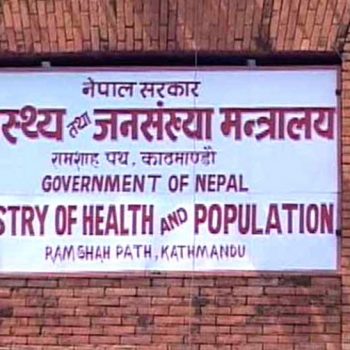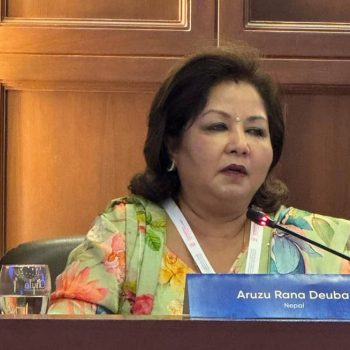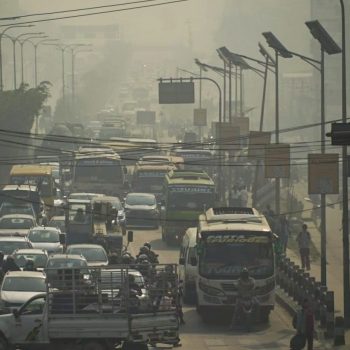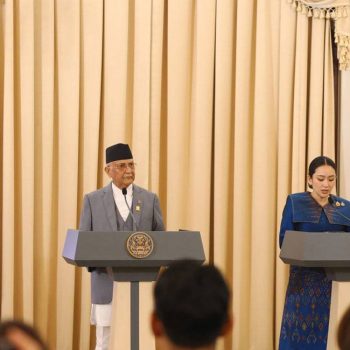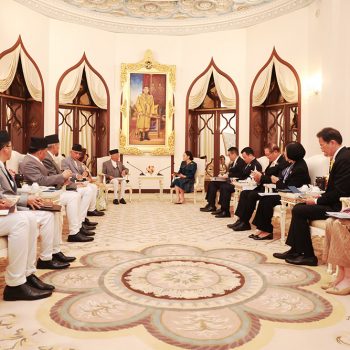Economic indicators fluctuate with change in base year
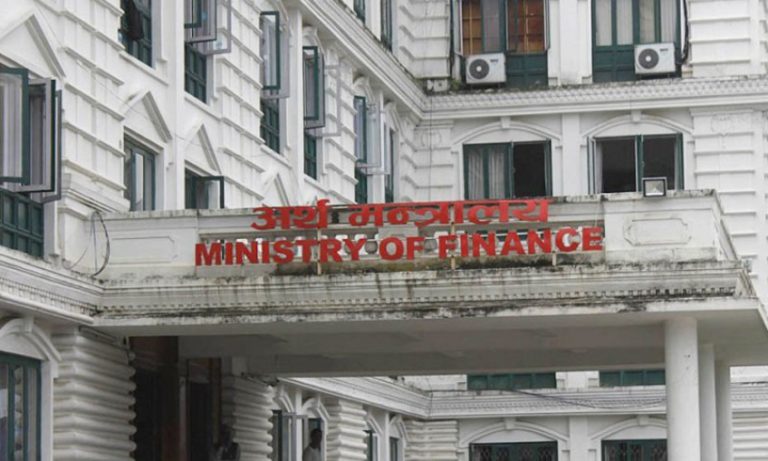
KATHMANDU: With the change in the base year by the Central Bureau of Statistics Office, many economic indicators, including Nepal’s economic growth rate, have declined. The economic growth rate has turned negative after five years and the per capita income has also increased.
In the last fiscal year, the Central Statistics Office had released the National Accounts Statistics Report and projected that the economic growth rate would shrink to 2.27 per cent due to COVID. However, according to the data released on Thursday, a negative growth rate of 1.99 per cent has been achieved in the fiscal year 2076-77.
Experts say the government’s failure to adopt the right economic policy along with COVID influence has led to a negative growth rate. Last year’s budget projected an ambitious growth rate of 8 per cent but the results are disappointing.
The National Planning Commission (NPC) has claimed that the global economy has shrunk due to COVID and that Nepal’s situation is more satisfactory than other countries. Last year, the economic growth rate was negative.
In 2072-73, the economic growth rate was negative at 0.2 per cent. Coincidentally at that time, we had the same Prime Minister and Finance Minister. One month ago, the Planning Commission had released a report saying that Nepal’s economy would shrink by 0.66 per cent. That projection was not fulfilled.
Donors, including the World Bank, the IMF and the ADB, had projected zero to negative growth. According to the department, the country’s gross domestic product (GDP) has increased by 14.07 per cent on the basis of the changed base year 2010-11. Similarly, it has increased by 5 per cent compared to the last fiscal year and will reach Rs. 3943.66 billion.
By changing the base year, production has increased by 20.27 per cent and consumption by 35.42 per cent. With the change in the base year, the number of sectors of the economy has been increased from 17 to 21 for national accounting. Based on the changed base year, the contribution of the primary sector to GDP is estimated to be 34 per cent, the second sector 13.9 per cent and the third sector 52.2 per cent.
Similarly, changes in GDP resulted in 0.5 per cent growth in agriculture, forestry and fisheries, 22.5 per cent in mining and quarrying, 4.5 per cent in industrial production, 46.8 per cent in electricity and gas, 3.7 per cent in construction, and 23.1 per cent in wholesale and retail trade. The percentage is expected to increase. It is expected to increase by 16.4 per cent in housing, 2.6 per cent in transport and communication, 36.8 per cent in financial and insurance-related activities, 52 per cent in real estate business, 157.9 per cent in public and social security and 112 per cent in education.
However, human health will decline by 1.2 per cent and arts, entertainment and other activities by 85.8 per cent. The Department of Statistics estimates that the economy will grow negatively by 4.6 per cent in the first three months of the current fiscal year. Due to COVID, Nepal’s economy has shrunk by 15.4 per cent to an average of 4.6 per cent.
This means that Nepal’s economy is recovering in a ‘V’ shape, says Hemraj Regmi, spokesperson of the department. “This is the fifth base year we’ve been preparing for three years. It has increased the size of our economy’s GDP and reduced the negative economic growth rate by about 0.6 per cent, ”he said.
Deputy Chairman of the National Planning Commission. Pushparaj Kandel says that the base year has been changed as Nepal has to be transformed from an underdeveloped country to a developing country within five years. He said that the fiscal year is expected to be negative. The commission had earlier projected a contraction of 0.66 per cent. With the end of the lockdown and the end of the travel ban, the economy is expected to pick up, and good economic growth is expected in the coming fiscal year, ‘he said.
Former Vice-Chairman of the Planning Commission Dr Govinda Pokhrel does not blame COVID alone for the contraction in Nepal’s economic growth. He says the government has not done much to change the economy for three years.
Due to the wrong policy of ‘Finance Minister Dr Yuvaraj Khatiwada, economic growth is now negative. He has not been able to come up with any program to improve the economy since COVID. “The government has not been able to increase its capital expenditure and has not paid attention to increasing domestic production,” Pokhrel said.
He claimed that the country did not suffer huge economic losses even in 10 years of people’s war due to their right policies during the time of Finance Minister Dr Ram Sharan Mahat and Mahesh Acharya. “They saved Nepal from becoming Afghanistan, but KP Oli’s permanent government could not save the country from a common pandemic,” Pokhrel said.
Another former vice-chairman of the Planning Commission, Dipendra Bahadur Chhetri, said that changing the base year would change the general figures, including economic growth, but would not bring much change. “After nine months of stagnation in the economy, it is only natural that economic growth will turn negative. But economic growth has been negative for three years as the government has failed to do much to boost the economy, create jobs and spend capital, “he said.
He said that the government’s frequent change of civil servants has also affected the economy. Until now, 2057-58 (2000-2001 ) has been considered as the base year and now the Fiscal Year 2067-68 (2010-2011) will be considered as the base year.
Earlier, Nepal had changed the base year for National Accounts Statistics five times in 1964-65, 1974-75, 1984-85, 1994-95, 2000-2001 and 2010-2011. Thus, changing the base year increases or decreases the Gross Domestic Product (GDP).
In South Asian countries, India’s Gross Domestic Product (GDP) declined by 3 per cent from 2004-05 to 2011-12 while changing base year.
When Sri Lanka changed its base year from 2002-03 to 2010-11, its GDP grew by 14 per cent. In the Maldives, the base had increased by 19.5 per cent from 2003 to 2014.









